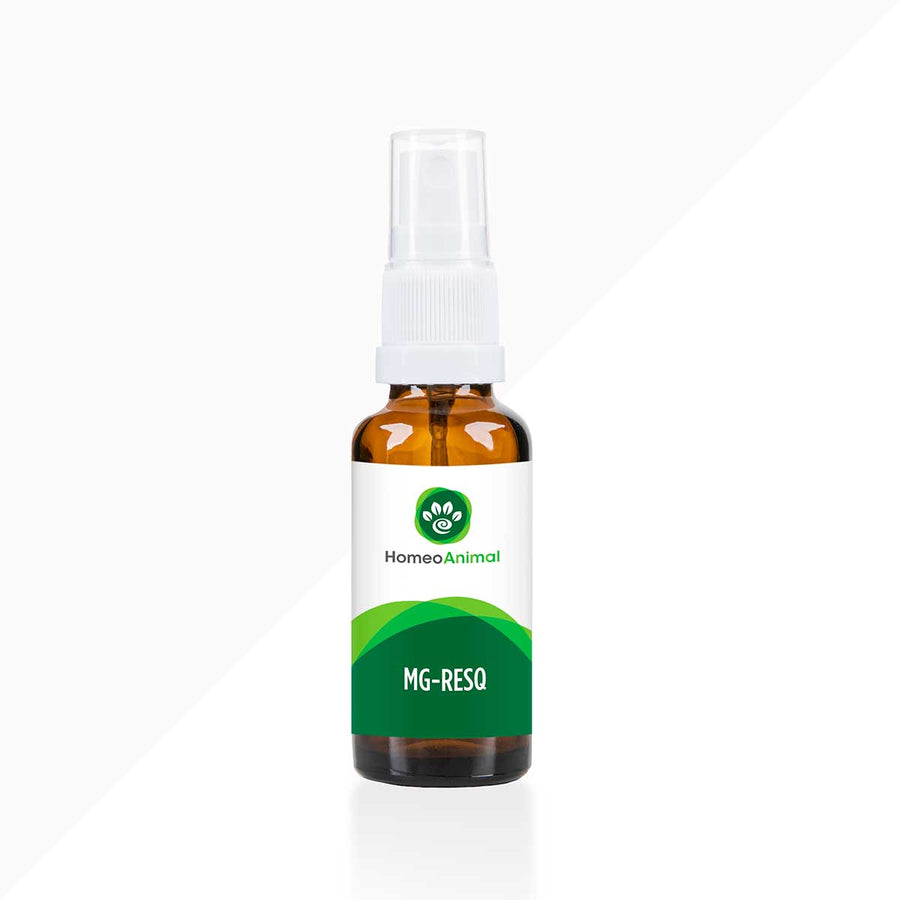Mange in Cats: Vet-Verified Symptoms, Causes, and Effective Treatments
Mange can cause significant discomfort for your feline friend. But with the right knowledge, you can help them find relief. In this article, you’ll learn what mange is, how to spot the signs, and the best treatments to get your cat back to feeling healthy and happy.
What is Mange in Cats?

Mange is a skin condition specific to several species of animals, including cats. However, mange in cats is not as common as it is in dogs, but that doesn't mean you shouldn't be on the lookout for any changes on your cat's skin.
This condition is a very contagious parasitic feline skin disease caused by different types of mites, such as Demodex mites. Some forms of mange from cats can also be transmitted to humans and can trigger extreme itching and bacterial infections.
Feline Mange: Types and Contagion Levels Explained
There are several types of mites that can cause mange in cats, including:
- Otodectes cynotis – These mites cause otodectic mange, commonly known as ear mites. They live in the cat's ear canal, feeding on dead cells, oils, and earwax. Ear mite infestations are very common in cats and Otodectes cynotis mites can spread to both ears in a relatively short time.
- Sarcoptes scabiei – These mites cause sarcoptic mange, which is rare in cats but common in dogs. This type of mange typically occurs in regional outbreaks and is highly contagious between animals. In cats, it often starts on the face but can spread across the body if left untreated. Additionally, these are the same mites that cause feline scabies. Sarcoptic mange mites are also the culprits for canine scabies.
- Notoedres cati – These mites cause notoedric mange, a rare but highly contagious condition. Other animals can also become infested. Notoedric mange typically appears on the ear margins, face, neck, and limbs, but it can spread across the entire body if left untreated.
- Demodex cati and D. gatoi – These mites cause demodectic mange. They are found on the skin (in hair follicles and sometimes in sebaceous glands) and in the ear canal. While more common in dogs, mange set off by Demodex cati mites typically affects cats with underlying metabolic disorders and can be transmitted to other cats. Moreover, this type of feline mange is also referred to as "red mange."
- Cheyletiella spp. – These mites cause cheyletiellosis, also known as "walking dandruff." This highly contagious condition can be transmitted to cats from dogs and rabbits.
Causes Of Mange In Cats: Risk Factors and Transmission
Mange is a relatively common health issue in cats, causing significant discomfort and various health problems. Risk factors that can increase the likelihood of a cat becoming infested with mange mites include:
- Age: Young cats are more vulnerable due to their developing immune systems.
- Immune system: Cats with weakened immune systems, regardless of age, are more susceptible to infestation.
- Environment: Dirty or crowded living conditions increase the risk of mite infestation, as mange mites thrive in such settings.
- Contact: Direct contact with an infected cat can spread mange. For Cheyletiella spp., cats can also catch it from infested dogs or rabbits.
Mange is primarily transmitted to healthy cats through direct contact with an infected animal. However, it can also spread indirectly via contaminated bedding, clothes, shoes, or objects like grooming tools. Skin scrapings from an infected animal can also harbor mites.
Is cat mange contagious to humans? Yes, notoedric and sarcoptic mange are zoonotic diseases, meaning they can be transmitted to humans and are highly contagious. While ear mites can also be passed to humans, this is rare and not considered a major public health concern. If you notice signs of mange in your cat, take them to the vet promptly. If sarcoptic or notoedric mange is diagnosed, it's also advisable to consult a doctor.
Is it safe to touch a cat with mange? Humans can contract mange from an infected cat, resulting in itchy, red rashes. Only sarcoptic and notoedric mange are transmittable to humans. To confirm the type of mites, a microscopic exam is needed. It's best to wear gloves and protective clothing when handling an affected kitty—or other pets with parasitic mites such as infected dogs—to reduce the risk of transmission. You can never be too careful with parasites like scabies mites!
Why would an indoor cat get mange? Indoor cats can become infected with mange through direct contact with an infected cat. These microscopic mites can also survive for up to three days on objects and surfaces, allowing them to spread indirectly. For instance, you can unknowingly bring these unwanted visitors into your home on shoes, particularly if they're made of fabric or textile, which can then infect your indoor cat and other pets. Indoor dogs can also be at risk of canine scabies.
How Do I Tell If My Cat Has Mange? Mange In Cats Symptoms and Clinical Signs

A cat's symptoms can vary depending on the type of mite infestation. However, excessive itching is a common symptom across all types of mange. Other typical signs include hair loss, crusts, and skin lesions, sometimes bloody due to intense scratching. If you notice any of these indicators, it’s important to take your cat to the vet as soon as possible.
Signs your cat has ear mites
Intense scratching around the ears, sometimes leading to self-mutilation
- Thickening of ear tissue, causing the ear canal to narrow
- Hair loss around the ears due to excessive scratching
- Frequent head shaking
- Occasionally, walking in circles
- Brown, thick ear discharge with a foul odor
Signs your cat has sarcoptic mange
- Severe itching and scratching, sometimes leading to self-mutilation
- Crusty skin lesions, occasionally bloody
- Rashes and sores
- Hair loss
Signs your cat has notoedric mange
- Intense itching and excessive scratching
- Chronic skin issues: crusts, rashes, sores, scales
- Weakness
- Occasional fever
- Hair loss
Signs your cat has demodectic mange
- Red skin
- Mild or absent itching
- Scratching
- Hair loss
- Localized skin lesions
Quick note: Demodex mites are not transmitted to humans but can be passed from cat to cat. If your cat has demodectic mange, it's important to isolate them from other cats to prevent the spread.
Signs your cat has cheyletiellosis
- Intense itching
- Excessive scratching that can lead automutilation
- Dandruff
- Scaly, flaky skin
- Reds bumps and crusts on the skin
- Crusts on the tip of the ears
- Hair loss
Diagnosing Mange in Cats
The presence of the parasite is confirmed by several investigation methods, such as:
- Clinical examination: The vet begins by assessing your cat’s overall health, looking for visible signs like skin lesions, thickened skin, redness, and itching. They may also ask about your cat’s medical history.
- Laboratory tests: Diagnosis may include skin scraping or a skin biopsy.
- Skin scrapings: The vet scrapes the skin surface to examine under a microscope for parasites, identifying species like Demodex, Sarcoptes, Notoedres, or Otodectes.
- Skin biopsy: If scraping isn’t conclusive (due to parasites being deeply embedded), a small skin sample is excised and sent for lab analysis.
What can be mistaken for mange in cats? Conditions like flea allergy dermatitis, skin infections, and ringworm can mimic mange, as they also cause itching and scratching. A proper diagnosis is crucial for effective treatment, so consult your vet at the first sign of symptoms.
Delaying diagnosis could allow mange to spread further, and secondary skin infections should not be overlooked. Early diagnosis of mange can also help prevent other skin problems and secondary infections.
How to Treat Mange in Cats
Conventional strategies are typically used to treat mites, such as:
- Topical medication (e.g., ivermectin or selamectin creams, ointments, or special shampoos)
- Oral medication
- Injectable drugs
It's crucial to consult a vet for proper treatment, as it depends on the severity of the condition and the type of mite affecting your cat. Self-treatment can be dangerous since these medications are strong and improper use can potentially affect your cat's immune system. Always follow the prescribed instructions carefully.
In addition, hygiene is key to managing mange. Since mites can survive in the environment for several days, regularly clean and disinfect bedding, carpets, furniture, and surfaces where your cat lives.
Regular grooming, including brushing and bathing, can help remove mites from your cat’s fur. Diet also plays a vital role in recovery—ensure your cat's diet is rich in proteins, vitamins, and minerals to boost their immune system and aid skin regeneration.
Lastly, monitor your cat’s health and follow up with veterinary check-ups to ensure the treatment is effective. In some cases, an alternative treatment may be required for full recovery.
Mange in Cats Treatment at Home

If you can't take your cat to the vet immediately, there are some home remedies that may provide temporary relief. However, these are not treatments and should only be used to ease itching or alleviate minor skin problems.
Apple cider vinegar
Apple cider vinegar has many uses and can help relieve itching, but it does not kill mites because it cannot penetrate their exoskeleton. Mites also burrow deep into the skin, making them unreachable by apple cider vinegar. To use, mix one part water with one part apple cider vinegar and apply it directly to your cat’s skin. Be cautious not to apply it to open wounds, as the acidity can cause a stinging sensation.
Olive and coconut oil
These oils can help soothe itching and restore your cat's skin elasticity. Gently massage olive or coconut oil directly onto the affected areas.
MG-RESQ
MG-RESQ from Zumalka contains multiple active ingredients that help restore your cat’s skin health, including Graphites 30k, Petroleum 30k, Psorinum 30k, Saponaria 30k, and Solidago 30k. It relieves symptoms like dry, rough skin, painful dermatosis, crusty patches, and rashes.
It’s an ideal natural remedy for combating mite infestations responsible for skin and fur damage. For an added immunity boost and body detox, you can combine MG-RESQ with the following natural products:
- TONICPET #1 is a natural product containing Calcarea Fluorica 6x (calcium fluoricum), which helps restore flexibility and elasticity to body tissues damaged by infestation. TONICPET #1 strengthens the skin and underlying tissues, promoting repair and recovery from the irritation and scratching caused by mange.
- TONICPET #3 is a homeopathic fortifier containing Calcarea Sulfurica 6x (calcium sulfate). It helps cleanse the blood by removing waste and toxins, which is essential for managing mange. This detoxification process supports the body's natural healing and improves the skin's ability to recover.
- TONICPET #4 contains Ferrum Phosphoricum 6x (iron phosphate), which supports oxygen circulation throughout your cat’s body, promoting cell regeneration and healing. By enhancing oxygen flow, TONICPET #4 helps repair damaged skin, reduces inflammation, and encourages healthy tissue regeneration.
- TONICPET #7 contains Kali Sulfuricum 6x (potassium sulfate), an ingredient that stimulates fur regrowth and supports the overall health of your cat's skin and coat.
- TONICPET #9 contains Natrum Muriaticum 6x (sea salt), an ingredient that promotes proper cellular hydration, essential for restoring vitality and overall body health.
- TONICPET #11 is a homeopathic fortifier containing Natrum Sulfuricum 6x (sodium sulfate), which helps balance water levels in your cat’s body and promotes the drainage of skin toxins, aiding in detoxification and skin health.
- SKIN SUPPORT is a natural product containing a blend of plants, vitamins, and minerals that promote skin regeneration by supporting the formation of connective tissues. Its key ingredients include Rutin (Styphnolobium japonicum), Burdock (Arctium lappa), Fumitory (Fumaria officinalis), Pansy (Viola tricolor), Gotu Kola (Centella asiatica), Herring soft roe extract (Clupea harengus), and Deglycyrrhizinated Licorice (Glycyrrhiza glabra), among others. These ingredients work together to support skin health, aid tissue repair, and improve overall skin vitality.
- SILVERPET is a product containing colloidal silver that supports the immune system and promotes overall health. Spraying it on your cat’s affected areas can reduce inflammation, soothe irritation, and promote skin healing. You can also add it to your pet’s water or administer it directly into their mouth to further support their immune system, helping the body fight the underlying causes of mange. Additionally, SILVERPET has antimicrobial properties, which help combat secondary bacterial and fungal infections, promoting faster recovery.
How can I treat mange in my cat at home? Mange requires medication and should not be treated at home. If your cat shows signs of systemic illness (e.g., lethargy, fever, loss of appetite), take them to the vet immediately.
Can mange in cats heal on its own? No, mange cannot heal on its own. Untreated mange can spread easily across your cat’s body, causing severe itchiness, pain, and discomfort. It's important to seek medical treatment.
What happens if mange goes untreated in cats? If untreated, mange will likely spread across your cat's entire body and could lead to systemic illness. Cats with underlying health conditions are at a higher risk of developing more serious health issues in the future.







Leave a comment